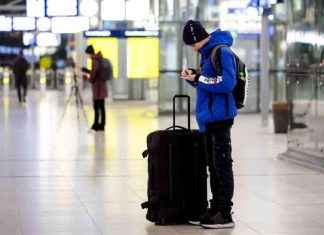Carnival is officially celebrated on January 6, the 12th day following Christmas. It usually culminates on Mardi Gras (or Fat Tuesday) which this year falls on March 1. Thursday’s festivities are planned two years after a Mardi Gras was a success and officials later discovered that it was an early Southern superpreader of COVID-19. It also comes nearly a full year after officials in the city, fearing more deaths and stress, canceled parades, and limited access to Bourbon Street, which is usually raucous, and almost a whole year after they realized this.
Despite the fact that COVID-19 is on the rise, this year’s party will continue despite the fact that the omicron variant has been increasing in number.
The traditional kickoff of the season will be the Phunny Phorty Phellows, who will meet at a cavernous streetcar barn to board one the St. Charles line cars with a small brass band. In accordance with city regulations, vaccinations were required. Streetcar seating was limited and evenly spaced. To prevent viral spread, riders were provided with face covers in addition to traditional over-the eye masks.
As Mardi Gras approaches, larger and more extravagant parades will be held in February. The city tries to temper the joy of the season with caution.
“It was definitely the right thing to cancel last year,” Dr. Susan Hassig of Tulane University, an epidemiologist, said. She is also a member of Krewe of Muses and rides every year on a large float in the Muses parade. “We didn’t have vaccines. “There was severe, raging disease all over the place.”
She also noted that New Orleans has a high vaccination rate. Although only 65% of the population of New Orleans is fully vaccinated according to city statistics, 81% are. The overall percentage of vaccinated adults is expected to rise now that eligibility is available to children younger than 18.
While Mardi Gras is a huge event for people outside of the city, Mayor LaToya Cantrell has anti-virus measures that include proof of vaccination and a negative test at most venues. Hassig stated that the mayor has established a vaccination requirement and/or a negative test in order to allow people to enjoy all of the New Orleans’s great things — the food, music, etc. However, she states that she would like to see a federal requirement for air travelers to be vaccinated.
Elroy James, president, Zulu Social Aid and Pleasure Club (a predominantly Black organization whose Mardi Gras morning Parade is a central point of Carnival), shares Hassig’s cautious optimism. COVID-19 was implicated in at least 17 deaths among Zulu members during the pandemic. The tragedy was made worse by the fact that there were no traditional jazz funerals for the deceased due to restrictions on public gatherings.
James stated Wednesday that most krewes have been proactive in implementing safety protocols since the beginning of this event. “Our float captains have confirmed that our riders have been vaccinated. Face masks are an important part of the 2022 Mardi Gras season.
In a state where the pandemic claimed more than 15,000 lives in the past two years, statistics still indicate cause for concern. According to Louisiana health officials, there were more than 1,287 hospitalizations Tuesday as of Tuesday. This is a significant increase over the 200 reported in mid-December. However, there are reports that the severity of omicron-driven illness is lower than in previous years. As a sign that the severity of the illness is less severe, Hassig noted that a lower proportion of patients need ventilators.
Parade participants who are dedicated don’t stop taking precautions with masks and shots. Staci Rosenberg, founder of Muses, said that the krewe planned to meet at a bar just a few blocks from the streetcar route in order to wait for the Phunny Phorty Phellows to pass. They’ve now moved the party to an outdoor parking lot.
Hassig says that she does not plan to attend indoor events. However, she is determined to participate in the February 24 parade, vaccinated and covered with an N95 face mask, knowing that outdoor activities are less likely to spread diseases.
Hassig is a key player in this effort. As the city struggled to recover from Hurricane Katrina’s catastrophic flooding, she rode in her first parade. She wants to be part of the tourism-dependent, traditional-loving city’s recovery after the economic ravages caused by the virus.
She said, “It is incredibly important for the city that these go well.”








